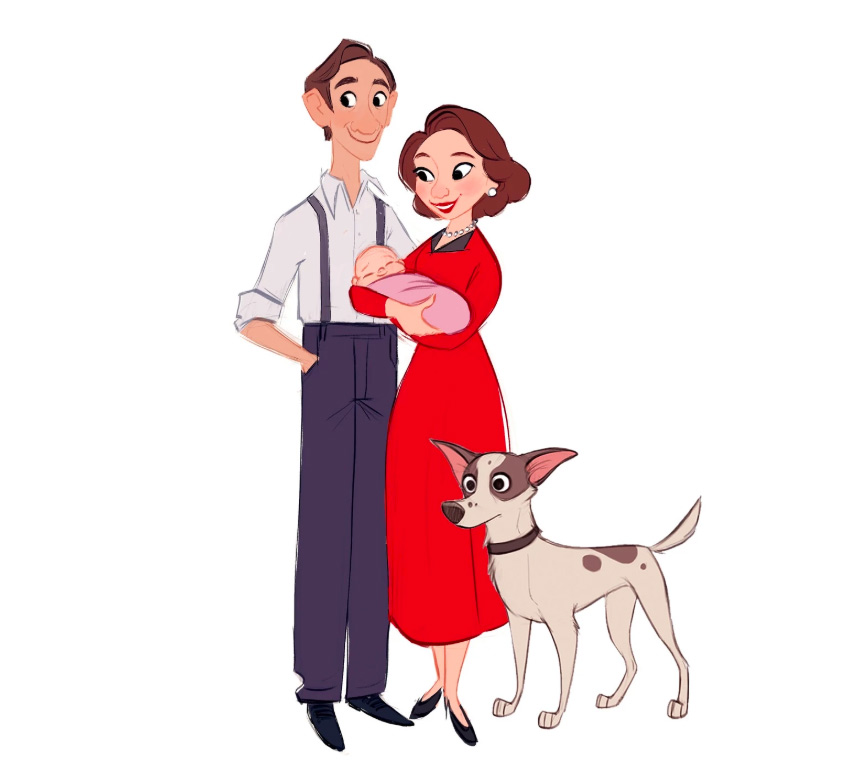The first thing that comes to mind when discussing the still-nascent medium of virtual reality is the technology, from the software to the headset required to experience it. But it’s human emotion that’s at the heart of Cycles, Walt Disney Animation Studios’ first VR short film, which debuted in August at SIGGRAPH.
Directed by Jeff Gipson, a lighting designer for the studio whose feature credits include Frozen, Big Hero 6, Zootopia, Moana and the upcoming Ralph Breaks the Internet, Cycles is a three-minute experience in which the viewer stands at the center of a graffiti-covered, abandoned multilevel mid-century home. A glance at the front door of the home turns the clock back some 50 years to see young couple Bert and Rae move in and make the house into a home. Using color, lighting and time-lapse techniques, the viewer follows the lives of the couple in the house as they raise a daughter, Rachel, grow old together and eventually leave behind a house imprinted with their lives.
Gipson says the idea came from his own experiences. A former architect, Gipson used to design skate parks and spends his off-time BMX freestyle riding in empty swimming pools. Most of those pools are on properties throughout Southern California that include houses that have not been lived in for years, but still reflect the people who once lived in them through worn carpet patterns, indentations from where the furniture was and the color of the walls.
“In architecture school, you are taught that every home and every building can tell a story over time,” he says. “I just love that idea that space changes over time.”
Inspired by Family Photos
The other part of the story came from spending a lot of time while growing at the home of his grandparents, who also are named Bert and Rae. (Gipson’s mother, Jaquie Gipson, is a professional musician and provided the score to the movie.) “I loved looking at old photos of her and my grandpa when they were young and in love,” he says.
The technical challenges of putting together the short, which runs about three minutes, were significant. “We didn’t have established pipeline to make a VR short,” says Gipson. They also wanted to maintain the animation and visual qualities that Disney brings to its feature film animation.
Assets were produced using the traditional Disney pipeline and then converted to Alembic format files to be transferred into the VR space, which ran using the Unity game engine.
Gipson says they started out with 2D storyboards and an Environment Scout Tool developed by software lead Jose Gomez, which allowed them to create the house space in VR and place the flat boards within it. Quill was then used to create VR paintings to add volume, proximity and scale to the boards.
Some motion capture was used in creating the previs, but all the animation in the final short is done by hand, Gipson says.
With real-time engines often limited in their ability to handle things like hair or cloth simulation, those effects were “baked in” to the characters and converted to an Alembic file that could be placed into the VR space. “Then we wrote a custom shader for the characters that gives them a kind of a graphic look but also keeps them in that world,” says Gipson.
To animate in the space, Gomez and his software team came up with a VR posing tool that allowed animators to put on the headset, enter the VR space and pose and rough out the animation almost like in stop-motion, says Gipson. That rough pass would then go back into Disney’s traditions pipeline for final animation.
Guiding the viewer’s eye in VR is a major consideration, one solved on Cycles by darkening and desaturating the image when looking away from the action. That, along with the time lapses, guide the viewer through the physical space as well as through the timeline of the family story.
Executed by Gomez, Gipson says the idea came out of conversations about how people remember the color and light in front of them in a memory, but nothing about the surrounding space. “Because the story is based on memories, we wanted to use it as a storytelling tool, but also as a way to guide you where you know the story’s happening and how you can follow it,” explains Gipson.













 Win 'The Art of DreamWorks Dog Man'!
Win 'The Art of DreamWorks Dog Man'! 

